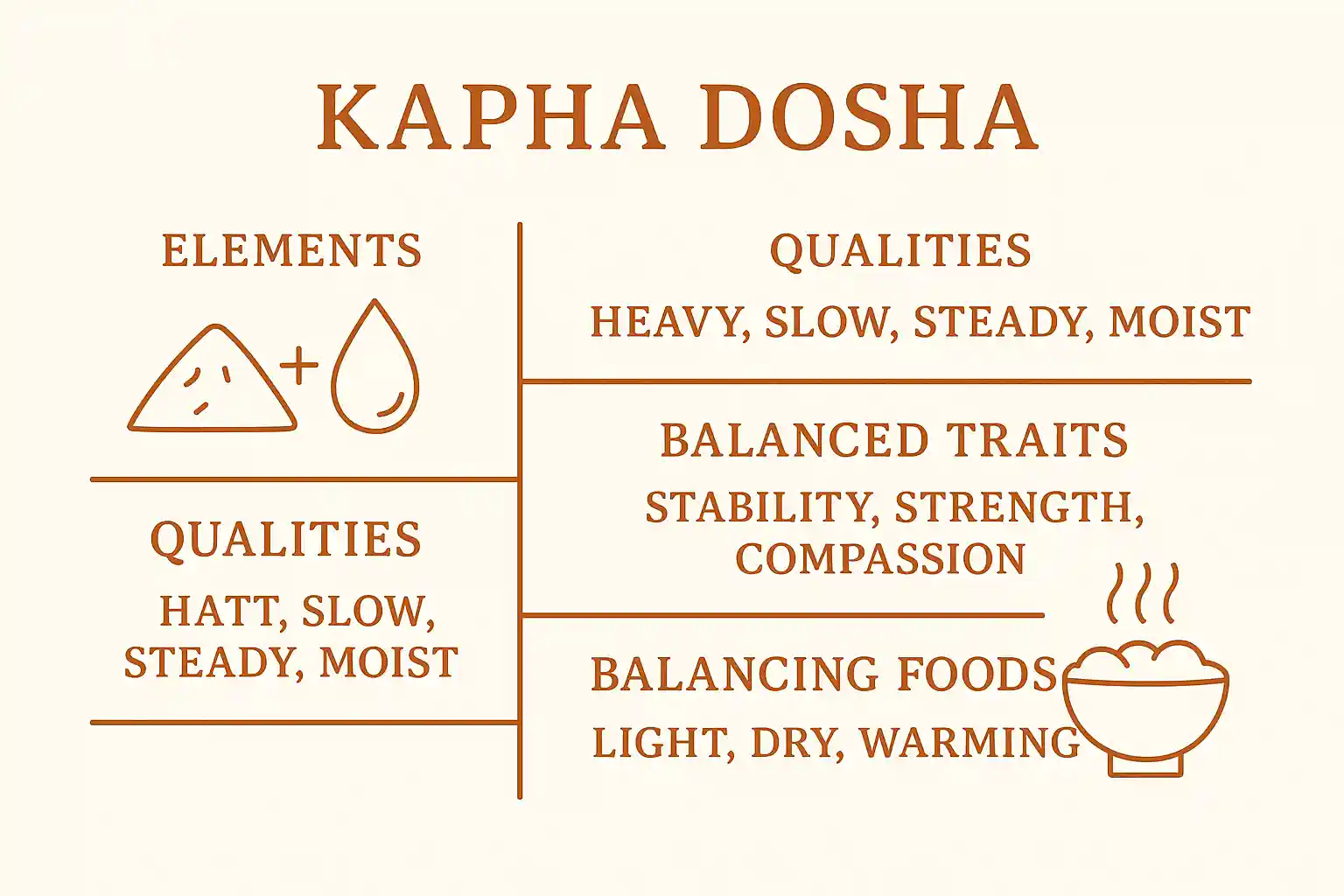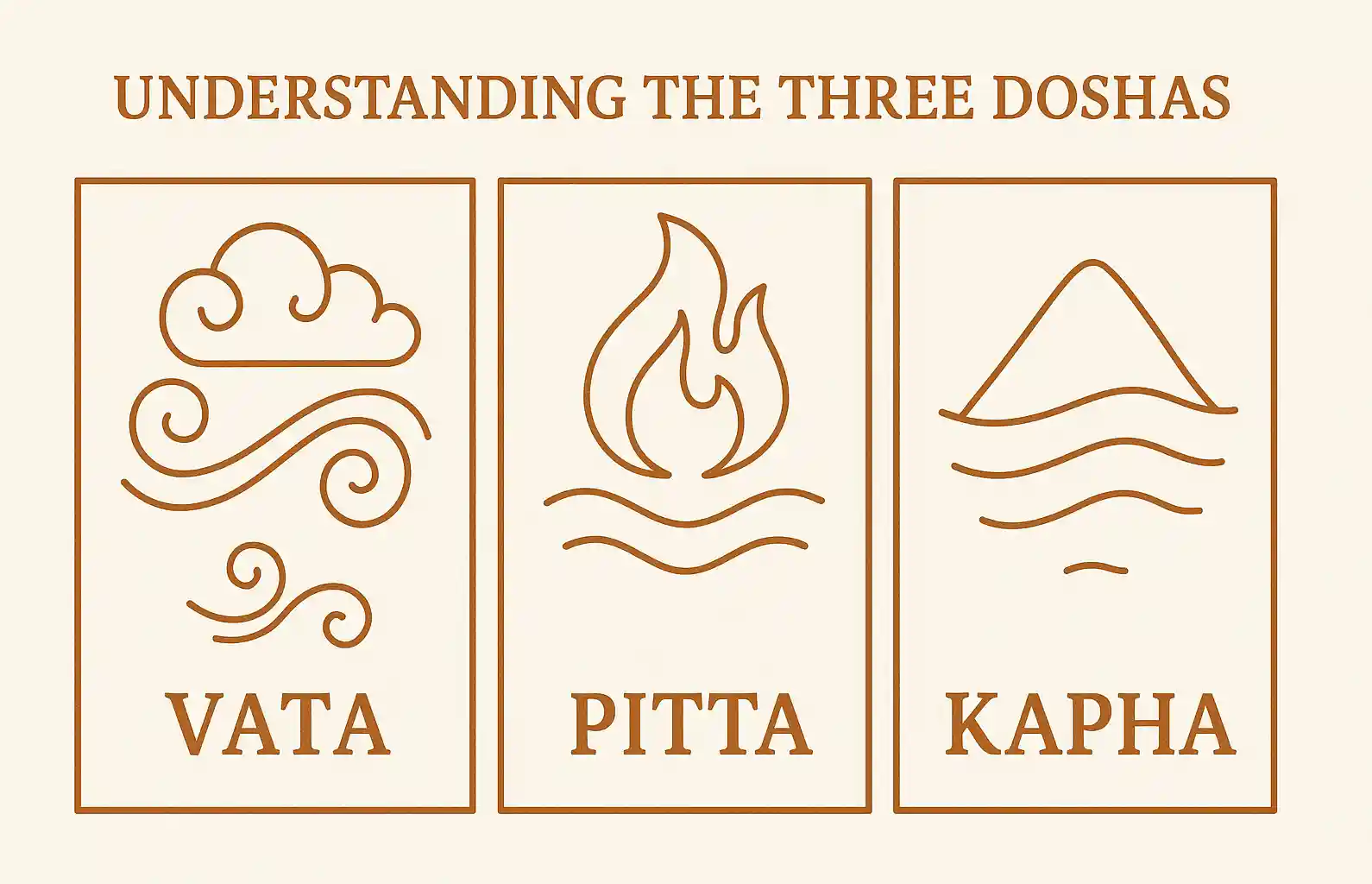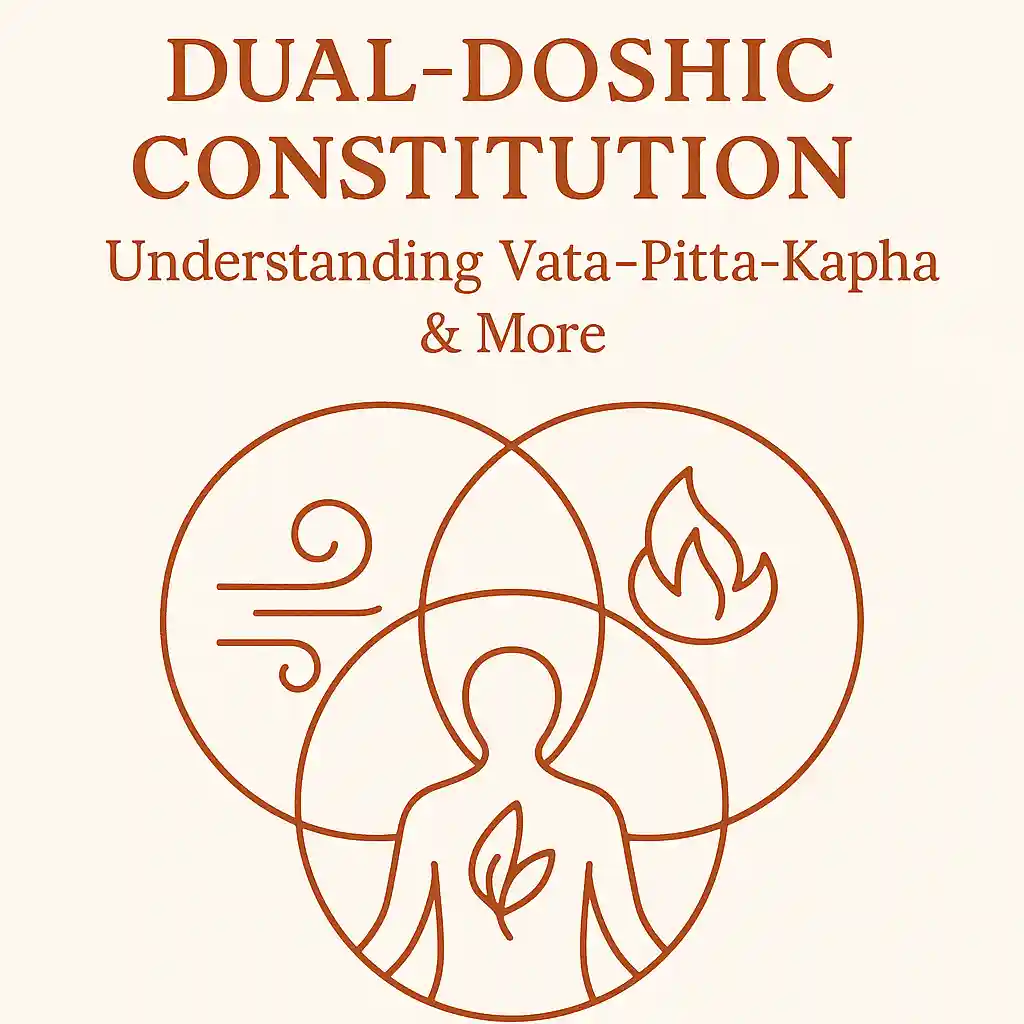In Ayurveda, your Dosha is your unique mind-body constitution, formed at conception and shaped by the five elements. Most people are not governed by a single Dosha, but by two dominant Doshas—a state called dual-Doshic or Dvandvaja Prakriti, as described in classical Ayurvedic texts like the Charaka Samhita.
Common dual-Doshic types include:
- Vata-Pitta
- Pitta-Kapha
- Vata-Kapha
Understanding your dual nature helps you better manage diet, lifestyle, stress, and seasons—because dual types can shift easily out of balance depending on environment and habits.
What Is a Dual-Doshic Constitution?
A dual-Doshic person has two Doshas that are nearly equal in strength, with the third Dosha being significantly less prominent. This combination can create a rich and dynamic personality—but also presents a unique challenge: when both Doshas are aggravated, it can be harder to rebalance.
For example, a Vata-Pitta person may experience both anxiety (Vata) and irritability (Pitta) under stress, making it important to soothe both air and fire energies simultaneously.
In practice, experienced Ayurvedic clinicians assess your current state (Vikriti) and adjust recommendations dynamically, especially when both Doshas are simultaneously elevated.
The Three Dual-Doshic Types
| Dual-Doshic Type | Key Qualities | Common Challenges |
|---|---|---|
| Vata-Pitta | Mobile, sharp, intense, light | Anxiety, irritability, sensitive digestion |
| Pitta-Kapha | Warm, stable, ambitious, strong | Inflammation, weight gain, sluggishness |
| Vata-Kapha | Light yet heavy, mobile yet stable (paradoxical) | Congestion, fatigue, emotional fluctuation |
1. Vata-Pitta Constitution
Elements: Air + Ether (Vata) and Fire + Water (Pitta)
Strengths
- Quick-thinking
- Creative
- Ambitious
- Energetic
Challenges
- Sensitive digestion
- Anxiety
- Irritability
- Burnout
Tips for Balance:
- Favor grounding, cooling, moist foods (soups, sweet fruits, ghee)
- Avoid overstimulation, caffeine, skipping meals
- Practice calming yoga, pranayama, time in nature
2. Pitta-Kapha Constitution
Elements: Fire + Water (Pitta) and Earth + Water (Kapha)
Strengths
- Determined
- Reliable
- Physically resilient
- Strong leadership qualities
Challenges
- Inflammation
- Weight gain
- Competitiveness
- Sluggishness
Tips for Balance:
- Favor light, dry, cooling foods (greens, legumes, bitter herbs)
- Avoid heavy, oily, or spicy foods
- Stay active and mentally engaged
3. Vata-Kapha Constitution
Elements: Air + Ether (Vata) and Earth + Water (Kapha)
Strengths
- Gentle
- Compassionate
- Creative
- Adaptable
Challenges
- Tendency toward fatigue
- Congestion
- Emotional fluctuation
- Difficulty with decision-making
Tips for Balance:
- Favor warm, light, mildly stimulating foods (spiced grains, cooked veggies)
- Avoid cold, damp, heavy foods
- Create daily structure; include both rest and gentle activity
How to Live in Harmony with a Dual-Doshic Nature
Key Principles for Dual-Doshic Balance
- Follow the dominant imbalance, not the label: If you're Vata-Pitta but experiencing acidity and anger, treat Pitta first.
- Adapt to the seasons: In summer, a Vata-Pitta may need more cooling; in winter, more grounding. In spring, a Pitta-Kapha might focus on clearing excess Kapha.
- Observe your mind: Mental/emotional states often reveal which Dosha is out of balance.
- Avoid extremes: Dual-Doshic types must be especially careful not to swing between opposite habits.
- When both Doshas are aggravated: Favor neutral strategies—like simple, cooked meals, gentle routines, and calming environments—to avoid aggravating either Dosha.
FAQs: Dual-Doshic Types
"Understanding your dual nature is the key to living in harmony with both energies within you."
Take the Dosha QuizRelated Articles

Understanding Kapha Dosha: The Foundation of Strength and Stability
Discover Kapha Dosha, the grounding force of Earth and Water elements. Learn how this vital energy provides structure, immunity, and emotional stability—and how to keep it balanced.
8 min read
Understanding the Three Doshas: Your Guide to Ayurvedic Constitution
Discover the three vital energies that govern your body and mind. Learn how understanding your unique dosha constitution can transform your approach to food, lifestyle, and daily wellness.
6 min read
